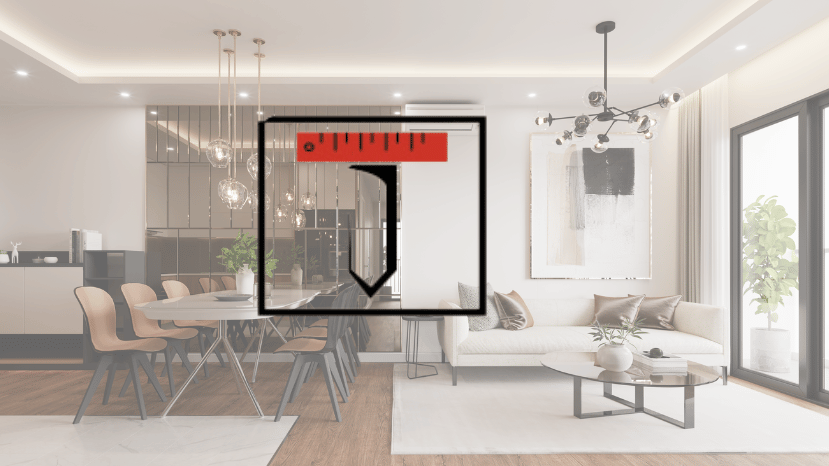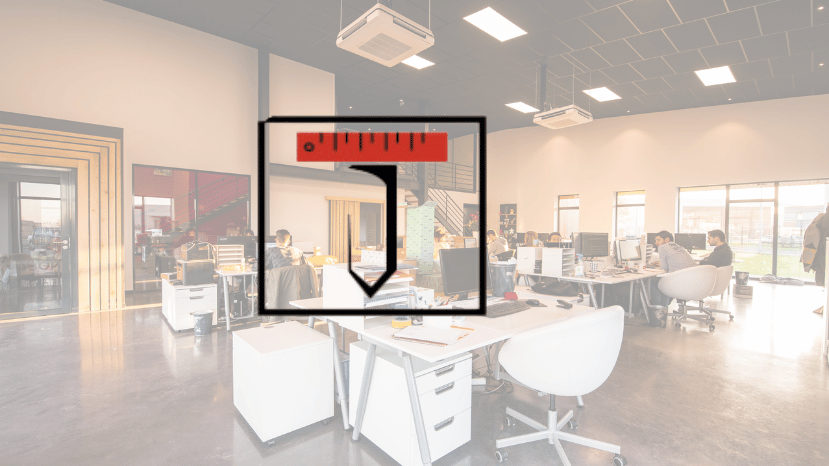
Table of Contents
What Is Interior Designing?
The art and science of improving a space’s interior to create a more visually beautiful and practical environment is known as interior design.
In order to produce a harmonic and well-balanced ambiance that suits the needs and tastes of the occupants, it entails the strategic arrangement and decoration of furniture, color schemes, lighting, textiles, and accessories inside a space.
Before creating design concepts and plans that meet these needs, interior designers collaborate with customers to understand their objectives, preferences, and financial limitations.
When designing their designs, they take into account things like building codes, traffic flow, functionality, safety requirements, and spatial layout.
Types Of Interior Designing
1. Lighting Design: Planning and implementing lighting solutions that enhance the ambiance of the space, highlight architectural features, and support various activities.
2. Furniture Selection and Arrangement: Selecting furniture pieces that complement the overall design scheme and arranging them in a way that promotes comfort, usability, and visual balance.
3. Color and Material Selection: Choosing appropriate colors, materials, and finishes for walls, floors, ceilings, and furnishings to create the desired mood and aesthetic appeal.
4. Space Planning: Determining the optimal layout and arrangement of furniture and fixtures within a space to maximize functionality and efficiency.
5. Environmental Considerations: Considering factors such as sustainability, energy efficiency, and indoor air quality when selecting materials and products for the interior design.
6. Textile and Accessories: Incorporating textiles such as curtains, rugs, and upholstery, as well as decorative accessories like artwork, mirrors, and plants, to add texture, warmth, and personality to the space.
Interior designers may work on a wide range of projects, including residential homes, commercial offices, retail stores, hospitality venues, healthcare facilities, and more.
Discover your passion at the Top Interior Design Institute in Sanjeeva Reddy Nagar, powered by Toolbox Creative!
Enroll in our comprehensive Interior Design Course today to unlock your creative potential.
Gain practical skills, industry insights, and personalized guidance from experienced professionals.
Secure your spot now and embark on a journey towards a rewarding career in interior design!

What You Will Learn During Your Interior Designing Course In Sanjeeva Reddy Nagar – Hyderabad
Drafting
Drafting, as used in interior design, is the process of producing intricate technical drawings and plans that show a space’s layout, measurements, and specifications.
These drawings give architects, contractors, and other project participants vital information and act as blueprints for building or remodeling interior spaces.
Drafting in interior design typically involves the following:
1. Floor Plans: Floor plans are 2D drawings that show the layout of a space from a top-down perspective. They indicate the arrangement of rooms, walls, doors, windows, and other architectural features.
Floor plans help visualize the flow and functionality of a space and are essential for spatial planning and furniture arrangement.
2. Details: Detail drawings provide close-up views and specifications of specific architectural elements, such as staircases, moldings, built-in furniture, and fixtures. They offer precise information about materials, dimensions, and construction methods to ensure accuracy and quality in the implementation of design elements.
3. Technical Drawings: Technical drawings include additional information such as electrical plans, plumbing layouts, and HVAC (heating, ventilation, and air conditioning) schematics. These drawings communicate the location and installation requirements for various building systems and utilities within the interior space.
4. Elevations: Elevations are 2D drawings that depict the vertical views of walls, cabinets, and other elements within a room. They show the height and arrangement of architectural features such as windows, doors, and built-in shelving.
Elevations provide detailed information about the appearance and proportions of the space and help communicate design intentions to contractors and craftsmen.
5. Sections: Sections are 2D drawings that represent vertical slices through a building or room, revealing the interior structure and spatial relationships. They show details such as ceiling heights, wall thicknesses, and structural elements.

Modelling
Modeling in the context of interior design refers to the creation of three-dimensional representations of interior spaces using various techniques and tools.
This process allows designers to visualize their ideas and communicate them effectively to clients, contractors, and other stakeholders involved in the project.
Modeling can take different forms, including:
1. Physical Models: These are tangible, scaled-down replicas of interior spaces constructed using materials such as paper, cardboard, foam board, or wood. Physical models provide a hands-on way to explore spatial relationships, proportions, and design concepts.
2. Digital Models: Digital modeling involves creating virtual representations of interior spaces using computer-aided design (CAD) software or 3D modeling software.
Designers can manipulate digital models to experiment with different layouts, materials, colors, and lighting scenarios.
Digital models are valuable for presenting realistic renderings and walkthroughs of proposed designs.
3. Sketch Models: Sketch models are quick, rough prototypes created through sketching or simple physical construction techniques.
They are used to explore initial design ideas and concepts before investing time and resources in more detailed modeling efforts.
4. Rendered Models: Rendered models combine digital modeling with rendering software to produce photorealistic images or animations of interior spaces.
These visualizations help clients and stakeholders better understand the final look and feel of a design proposal.
Visualization
visualization is the process of producing eye-catching visuals that successfully convey design concepts to clients, stakeholders, and construction teams.
An essential component of interior design is visualization, which enables designers to turn their ideas into vibrant, immersive environments.
Students master the technique of visualization at the Toolbox Creative-powered Top Interior Design Institute in Sanjeeva Reddy Nagar, which enables them to bring concepts to life with astounding realism and detail.
1. Digital Rendering: Utilizing advanced software tools, students create lifelike renderings of interior spaces, showcasing details such as materials, lighting, textures, and furnishings.
These renderings provide clients with a clear vision of the final design, facilitating decision-making and approval processes.
2. 3D Modeling: Students develop proficiency in 3D modeling software to construct virtual representations of interior environments.
By manipulating digital models, they explore different design iterations, experiment with spatial arrangements, and refine architectural elements to achieve optimal aesthetics and functionality.
3. Virtual Reality (VR) and Augmented Reality (AR): Leveraging cutting-edge technologies, students immerse themselves in virtual environments to experience designs in a realistic and interactive manner.
VR and AR simulations enable clients to navigate through spaces, visualize design concepts at scale, and provide valuable feedback for refinement.
4. Sketching and Hand Rendering: Students hone their sketching and hand rendering skills to quickly communicate design ideas and concepts.
These traditional techniques capture the essence of a design concept, conveying mood, atmosphere, and spatial relationships with artistic flair.
Review & Analysis
Review & Analysis in the context of interior design refers to the critical examination and evaluation of design projects, processes, and outcomes to identify strengths, weaknesses, opportunities, and threats.
This comprehensive assessment helps designers and stakeholders gain insights into the effectiveness and impact of their design solutions.
At the Top Interior Design Institute in Sanjeeva Reddy Nagar -Toolbox Creative, Review & Analysis is an integral component of the curriculum, empowering students to refine their design skills and elevate their professional practice.
1. Evaluate Design Concepts: Students analyze design concepts and proposals to assess their alignment with project objectives, client requirements, and industry standards.
They consider factors such as functionality, aesthetics, sustainability, and budgetary constraints to determine the viability and effectiveness of design solutions.
2. Critique Design Elements: Students critically evaluate various design elements, including spatial layouts, furniture arrangements, material selections, and color schemes.
They identify strengths and weaknesses in design compositions, identifying opportunities for improvement and innovation.
3. Assess User Experience: Students examine the impact of design decisions on user experience and usability, considering factors such as ergonomics, accessibility, and emotional resonance.
They gather feedback from end-users and stakeholders to refine design solutions and enhance user satisfaction.
4. Analyze Market Trends: Students stay abreast of emerging trends, technologies, and best practices in the field of interior design through market analysis and trend forecasting.
They assess the relevance and applicability of trends to specific projects, anticipating future demands and opportunities in the industry.
5. Identify Success Metrics: Students establish criteria for evaluating the success of design projects, such as client satisfaction, project outcomes, and return on investment.
They track key performance indicators and metrics to measure the effectiveness and impact of their design interventions.
Why Choose Toolbox Creativity As Top Interior Design Institute in Sanjeeva Reddy Nagar?

Toolbox Creative is the premier destination for aspiring interior designers seeking top-notch education and practical skills in Sanjeeva Reddy Nagar.
Our institute stands out as the leading choice for individuals passionate about carving a successful career in the dynamic field of interior design.
What sets Toolbox Creative apart as the Top Interior Design Institute in Sanjeeva Reddy Nagar?
1. Comprehensive Curriculum: Our curriculum is meticulously designed to cover all aspects of interior design, ensuring that students receive a well-rounded education that prepares them for the complexities of the industry.
2. Experienced Faculty: At Toolbox Creative, students learn from the best in the field. Our faculty comprises seasoned professionals and industry experts who bring a wealth of knowledge and practical experience to the classroom.
3. Hands-On Experience: We believe in learning by doing. That’s why our institute emphasizes hands-on experience through practical assignments, workshops, and real-world projects, allowing students to apply theoretical concepts in a practical setting.
4. Modern Facilities: Our institute is equipped with latest technology, including design studios, computer labs, and resource centers, providing students with access to the latest technology and tools essential for their education.
5. Industry Connections: Toolbox Creative has established strong connections with leading firms and professionals in the industry. Through guest lectures, industry visits, and networking events, students have the opportunity to interact with industry experts and gain valuable insights into the field.
6. Career Support: We are committed to the success of our students beyond graduation. Our institute offers comprehensive career support services, including resume building, portfolio development, and job placement assistance, to help students kick-start their careers in interior design.
Investing in top-notch training, real-world experience, and industry connections is what it means to choose Toolbox Creative as your route to a lucrative Interior Design profession.
Come along with us today and start your fulfilling path to becoming a talented and professional interior designer.
Contact us now to learn more about our courses and enrollment process.

Leave a Reply
You must be logged in to post a comment.